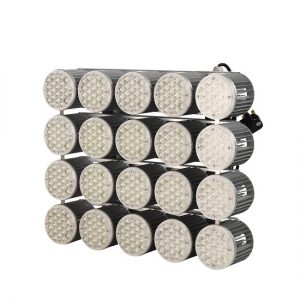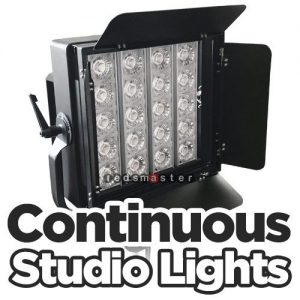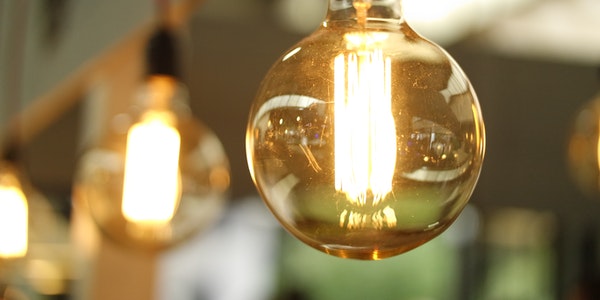Classification of LED drive power
1. According to the driving method
(1) Constant current type
- The output current of the constant current drive circuit is constant, but the output DC voltage varies within a certain range with the size of the load resistance. The smaller the load resistance, the lower the output voltage. The larger the load resistance, the output The higher the voltage;
- The constant current circuit is not afraid of the load short circuit, but it is strictly forbidden to open the load completely.
- It is ideal for a constant current drive circuit to drive the LED, but it is relatively expensive.
- Pay attention to the maximum current and voltage values used, which limit the number of LEDs used;
(2) Regulated type:
- When the various parameters in the voltage regulator circuit are determined, the output voltage is fixed, but the output current changes with the increase or decrease of the load;
- The voltage regulator circuit is not afraid of load opening, but it is strictly forbidden to short-circuit the load completely.
- The LED is driven by a voltage-stabilizing drive circuit, and each string needs to be added with a suitable resistance to make each string of LEDs show an average brightness;
- The brightness will be affected by the voltage change from the rectification.

(3) Pulse drive
Many LED applications require dimming functions, such as LED backlighting or architectural lighting dimming. The dimming function can be realized by adjusting the brightness and contrast of the LED. Simply reducing the current of the device may be able to adjust the LED’s light emission, but letting the LED work below the rated current will cause many undesirable consequences, such as color difference. An alternative to simple current adjustment is to integrate a pulse width modulation (PWM) controller in the LED driver.
The PWM signal is not directly used to control the LED, but to control a switch, such as a MOSFET, to provide the required current to the LED. The PWM controller usually works at a fixed frequency and adjusts the pulse width to match the required duty cycle. Most current LED chips use PWM to control LED light emission. In order to ensure that people will not feel obvious flicker, the frequency of PWM pulse must be greater than 100HZ. The main advantage of PWM control is that the dimming current through PWM is more accurate, which minimizes the color difference when the LED emits light.
(4) AC drive
According to different applications, AC drives can also be divided into three types: buck, boost, and converter. The difference between AC drive and DC drive, besides the need to rectify and filter the input AC, there is also a problem of isolation and non-isolation from a safety perspective.
AC input drivers are mainly used for retrofit lamps: For ten PAR (Parabolic Aluminum Reflector, a common lamp on professional stage) lamps, standard bulbs, etc., they are in 100V, 120V or 230V It operates under AC input, while for MR16 lamp, it needs to work under 12V AC input. Due to some complicated problems, such as the dimming ability of standard triacs or leading edge and trailing edge dimmers, and compatibility with electronic transformers (from AC line voltage to generate 12V AC when MR16 lamps work) The problem of performance (ie, flicker-free operation), therefore, compared with the DC input driver, the field involved in the AC input driver is more complicated.
AC power supply (mains drive) is applied to LED drive. Generally, it needs to go through steps such as step-down, rectification, filtering, and voltage stabilization (or current stabilization) to convert the AC power to DC power, and then provide suitable LEDs through a suitable drive circuit. Working current. It also has high conversion efficiency, small size and low cost, while solving the problem of safety isolation. Taking into account the impact on the power grid, electromagnetic interference and power factor issues must also be resolved. For low- and medium-power LEDs, the best circuit structure is an isolated single-ended flyback converter circuit. For high-power applications, a bridge converter circuit should be used.
2. According to the circuit structure
(1) Resistor and capacitor step-down method: when the capacitor is used to step down, due to the effect of charging and discharging, the instantaneous current through the LED is extremely large, and the chip is easily damaged. It is susceptible to the influence of grid voltage fluctuations, and the power supply has low efficiency and reliability.
(2) Resistor step-down method: through resistance step-down, it is greatly interfered by changes in the grid voltage, and it is not easy to make a regulated power supply. The step-down resistor consumes a large part of the energy, so the power supply efficiency of this power supply method is very low , And the reliability of the system is low.
(3) Conventional transformer step-down method: the power supply is small in size, heavy in weight, and low in power supply efficiency, generally only 45% to 60%, so it is generally rarely used and has low reliability.
(4) Electronic transformer step-down method: The power supply efficiency is low, and the voltage range is not wide, generally 180~240V, with large ripple interference.
(5) RCC step-down switching power supply: the voltage regulation range is relatively wide, the power supply efficiency is relatively high, generally 70% to 80% can be achieved, and the application is also wide. Because the oscillation frequency of this control method is not continuous, the switching frequency is not easy to control, the load voltage ripple coefficient is also relatively large, and the adaptability to abnormal loads is poor.
(6) PWM control mode switching power supply: mainly composed of four parts, input rectification filtering part, output rectification filtering part, PWM voltage stabilization control part, and switching energy conversion part. The basic working principle of PWM switching regulator is that when the input voltage, internal parameters and external load change, the control circuit performs closed-loop feedback through the difference between the controlled signal and the reference signal to adjust the pulse width of the main circuit switching device. Make the output voltage or current of the switching power supply stable (that is, the corresponding regulated power supply or constant current power supply). The power supply efficiency is extremely high, generally 80% to 90% can be achieved, and the output voltage and current are stable. Generally, this kind of circuit has complete protection measures and is a high-reliability power supply.
3. Power installation location classification
Drive power can be divided into external power supply and built-in power supply according to the installation position.
(1) External power supply
As the name implies, the external power supply is to install the power supply outside. Generally, the voltage is relatively high, which is dangerous to human safety, and an external power supply is required. The difference with the built-in power supply is that the power supply adds a shell, common street lights, flood lights, stadium lights, explosion-proof lights and so on.
(2) Built-in power supply
The power supply is installed in the lamp. Generally, the voltage is relatively low, from 12v to 24v, which poses no safety hazard to people. This common one has bulb lights.
Tips for improving efficiency
- The main current loop PCB should be as short as possible. The experience and layout of LAYPCB is not difficult. The quick way is to look at the works of major manufacturers.
- Optimize the design of transformer parameters to reduce eddy current loss caused by ringing. This is more difficult. First, you must master the basic knowledge of electromagnetics and design a reasonable transformer. The most important thing is patience. Even if you think of improving the efficiency by 0.5%, you must try.
- Reasonable selection of switching devices. This is the balance between cost and performance. What kind of customer requirements and what kind of devices are used, but it must be reasonable. If you want efficiency, there is no doubt that COOL MOS–low VF output diode is the best choice.
- If the optimized design of the input EMI part is to pass safety certification, this part is more sophisticated, mainly because of experience and technical level.
- Choose a high-efficiency topology structure. This is the beginning of program selection, such as PWM and QR PFM. At present, when customers put forward efficiency requirements, it is necessary to evaluate which topology to choose.

- Choose a good electrolytic capacitor. Many people ignore this. The loss of electrolysis is very large, which invisibly reduces the efficiency of the driving power supply.
- Under the premise that the power consumption of the startup part is designed to be efficient, it must be considered. Many chips have HV startup pins, and the startup current is getting lower and lower. This is to know more about new devices, of course, as well as additional circuits. Lossless start, etc., but not suitable for LED driving.
- Chip auxiliary power supply optimization. LED generally has a wide voltage output, so the best choice is to add a linear regulator to make the chip work at 15V to reduce loss.
The development status of LED drive power
While LED shines, LED drive power is the top priority of the development of the LED industry chain. The life and reliability of LED drive power directly affect the long life of LED light source. Therefore, while the LED industry chain continues to integrate and develop, the maturity of LED drive power technology plays a decisive factor. Due to the rapid development of the LED industry, it has gradually shifted from the direction of municipal public lighting to ordinary civil lighting. It has benefited from a series of policies that encourage the development of the LED industry that have been issued by countries around the world, but this has also brought many problems. The power supply problem is exposed.
The LED drive power market is closely related to the development of downstream industries, especially high-power LED street lights. However, with the continuous improvement of various performance parameters of LEDs, the LED lighting market has gradually emerged and the application fields have become more extensive, especially in 2012. While shifting from outdoor to indoor commercial lighting applications, the market and customers also have higher requirements for LED drive power, especially the efficiency, power factor, life, constant current accuracy, electromagnetic compatibility and other performance of the power supply. As the application of LED will gradually change from government engineering dominance to civil lighting dominance, the application of LED will gradually be subdivided.
Although the claim that the lifetime of a single LED is as long as 100,000 hours is no longer tenable, the LED drive power supply has indeed not kept up with the actual lifetime of the LED. The promotion of LED lighting products is affected because the life of the LED driving power supply itself directly drags down the life of the LED lighting fixture; or the low efficiency of the driving power supply leads to low efficiency conversion of the LED lighting fixture; or the instability of the output current and voltage affects the light emission The quality of LED lighting greatly reduces the green energy-saving advantages of LED lighting, thus affecting the popularity of the market.
In order to overcome the heat dissipation and lifetime problems of the above-mentioned LED drive power supply, the electrolytic capacitor-free LED drive solution will become the ultimate choice in the market. The future LED drive power supply will develop towards the trend of stability, safety, high efficiency, no electrolytic capacitors, high integration and small size.
The development trend of LED drive power
(1) Develop a series of constant voltage and constant current control electronic circuits based on the characteristics of LEDs, use integrated circuit technology to control the input current of each LED at the best current value, so that the LED can obtain a stable current and produce the highest output luminous flux . The LED drive power supply can best control the LED current when the input voltage and ambient temperature change.
(2) The LED drive power supply has an intelligent control function, so that the load current of the LED can be controlled at a pre-designed level under the influence of various factors. When the load current changes due to various factors, the primary control IC can control the switch to return the load current to the initial design value.
(3) In terms of control circuit design, it is necessary to develop in three aspects: centralized control, standard modularization, and system scalability.
(4) In the case of limited LED luminous efficiency and luminous flux, give full play to the characteristics of LED color diversity and develop color-changing LED lighting control circuits.
The development direction of LED drive power
LED has many advantages, such as environmental protection, energy saving, small size, long life, etc., which will gradually replace traditional fluorescent lamps and incandescent lamps in general lighting in the future. The performance of the driving power supply is the key to ensuring the overall performance of the LED. Therefore, it is necessary to ensure that the LED driving power supply has the advantages of small size, long life, high reliability, etc.
LED driving has the following research hotspots:
- Improve the life of the drive power
One of the important advantages of LEDs is their long service life, about 30,000 to 100,000 hours. Traditional LED driving power supplies contain electrolytic capacitors, and the lifespan of electrolytic capacitors is relatively short, about 5,000 hours. This is the main reason that restricts the life of LED driving power supplies. Therefore, electrolytic capacitors should not be used in LED driving power supplies as much as possible.
- Improve the input power factor of the drive power supply and reduce the total harmonic distortion. The “ENERGYSTAR” solid-state lighting document issued by the US Department of Energy stipulates that: any power level requires mandatory power factor correction. This standard applies to a series of products, such as table lamps, cabinet lighting and so on. Among them, the power factor of the LED driving power supply for household and residential lighting must be greater than 0.7, and for commercial lighting, it must be greater than 0.9. The IEC61000-3-2 harmonic content standard stipulates that the total harmonic distortion (THD) should be less than 35% and the power factor should not be less than 0.7 in lighting with a power level greater than 25W. The promulgation of these standards puts forward higher requirements for the design of the driving power supply for LED lighting.
- Reduce the size of the drive power
The LED itself is relatively small, which is very beneficial for portable products. The LED drive power should also be as small as possible, so that it can be smoothly installed in the LED lamp holder. In the design process, the volume of the drive power supply should be minimized.
- Improve the reliability of the drive power
During the working process of the LED, non-human factors such as high temperature and aging of the device can cause fatal damage to the LED body. Therefore, protection circuits such as overvoltage protection and overcurrent protection should be added to the LED driving power supply to deal with accidents and ensure the safe operation of the LED body.
Drive power design
The design of LED drive power is not difficult, but it must be well known. As long as it is calculated before debugging, measured during debugging, and aged after debugging, I believe anyone can do a good job of LED.
- LED current
Everyone knows that if the LEDripple is too large, the life of the LED will be affected, but there is no specific indicator.
- Chip fever
This is mainly aimed at the high-voltage driver chip with built-in power modulator to reduce the power consumption of the chip, do not introduce additional power consumption, and do a good job of heat dissipation.
- Power tube heating
Regarding this issue, I have seen someone post on the forum. The power consumption of the power tube is divided into two parts, switching loss and conduction loss. For LED mains drive applications, the switching damage is far greater than the conduction loss. The switching loss is related to the cgd and cgs of the power tube, as well as the drive capability and operating frequency of the chip, so to solve the heating of the power tube, the following aspects can be solved:
a. You cannot choose MOS power transistors based on the on-resistance one-sidedly, because the smaller the internal resistance, the larger the cgs and cgd capacitances.
b. The rest is the frequency and chip drive capability, here only talk about the influence of frequency. The frequency is also proportional to the conduction loss, so when the power tube is heating up, you must first think about whether the frequency is selected a bit high. When the frequency decreases, in order to obtain the same load capacity, the peak current must become larger or the inductance must also become larger, which may cause the inductance to enter the saturation region. If the inductor saturation current is large enough, you can consider changing CCM (continuous current mode) to DCM (discontinuous current mode), so you need to add a load capacitance.
4. Working frequency reduction
The frequency reduction is mainly caused by two aspects. The ratio of input voltage to load voltage is small, and system interference is large. For the former, be careful not to set the load voltage too high, although the load voltage is high, the efficiency will be higher. For the latter, you can try the following aspects: a. Set the minimum current to a smaller point; b. Clean the wiring, especially the critical path of sense; c. Select a small inductance or use a closed magnetic circuit inductance ; D, add RC low-pass filter, this effect is a bit bad, the consistency of C is not good, the deviation is a bit big, but it should be enough for lighting.
- The choice of inductor or transformer
Since the working voltage of high-power LEDs is only 3V, 220V AC power is converted into DC power through full-bridge rectification. The voltage drop on the full-bridge is about 1.8V, and the power utilization efficiency for driving only one LED is only 60%. It is necessary to connect more than three light-emitting diodes in series to make the total power utilization efficiency exceed 80%.
According to the principle of 3 primary colors to synthesize white light, three 1W high-power light-emitting diodes of red, green and blue are connected in series to work, and the brightness equivalent to that of a 3W white LED can be obtained. At the same time, 6 kinds of colored lights can be combined to satisfy people’s preference for changing colored lights.



